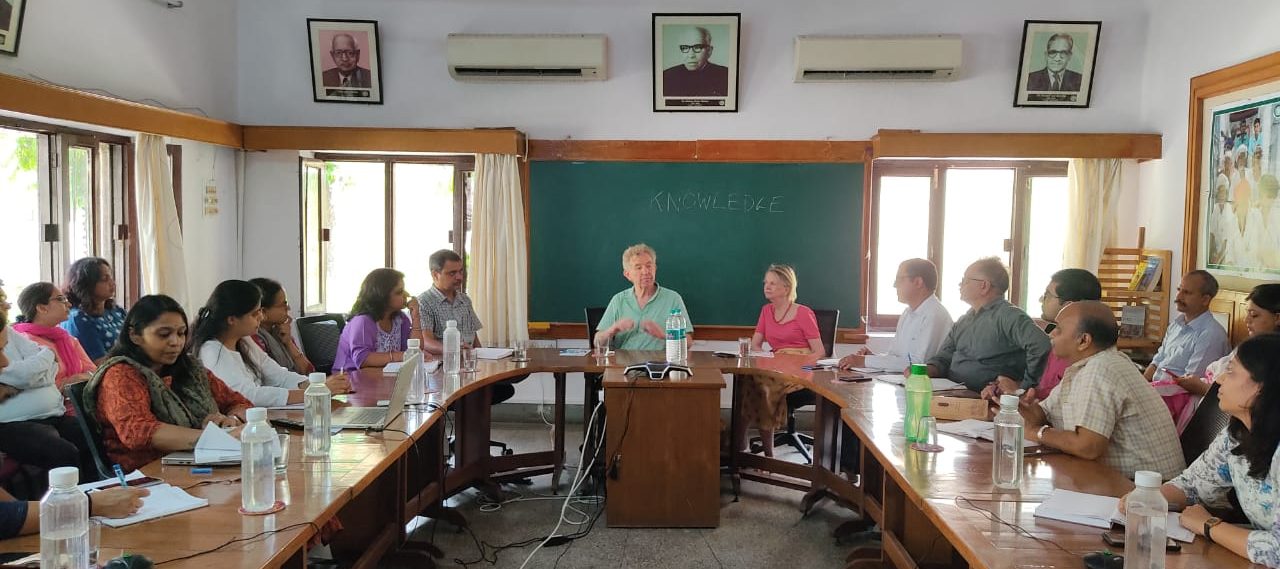In June, long-standing friends of Seva Mandir, Chris and Gilly Wiscarson, spent a fortnight in Udaipur, Rajasthan. In this intimate account, they share their impressions and reflections from the visit.
First Impressions
Our initial impressions on arriving at Udaipur airport were, firstly, how good the roads are – there has been a massive infrastructure investment. Secondly, how green the trees are from three days of unseasonal rain in March. Thirdly, how much land is now being worked, owing to Seva Mandir’s investment and influence upon how the villages can help themselves.
The Commons
When we started working with Seva Mandir twenty years ago, they divided their efforts between schooling, maternity care, women’s support groups, land management and vocational training – each relatively independent. Today these divisions are being eradicated as integrated interventions are proving more effective.
We visited one particularly poor village that was clearly much richer for Seva Mandir’s water storage and pumping facility. Now women no longer have to walk miles to fetch water, giving them the gift of time. That gift, together with the village nursery school, enables the women to work newly regenerated land where they grow enough food for their family and have sufficient left over to send to market.
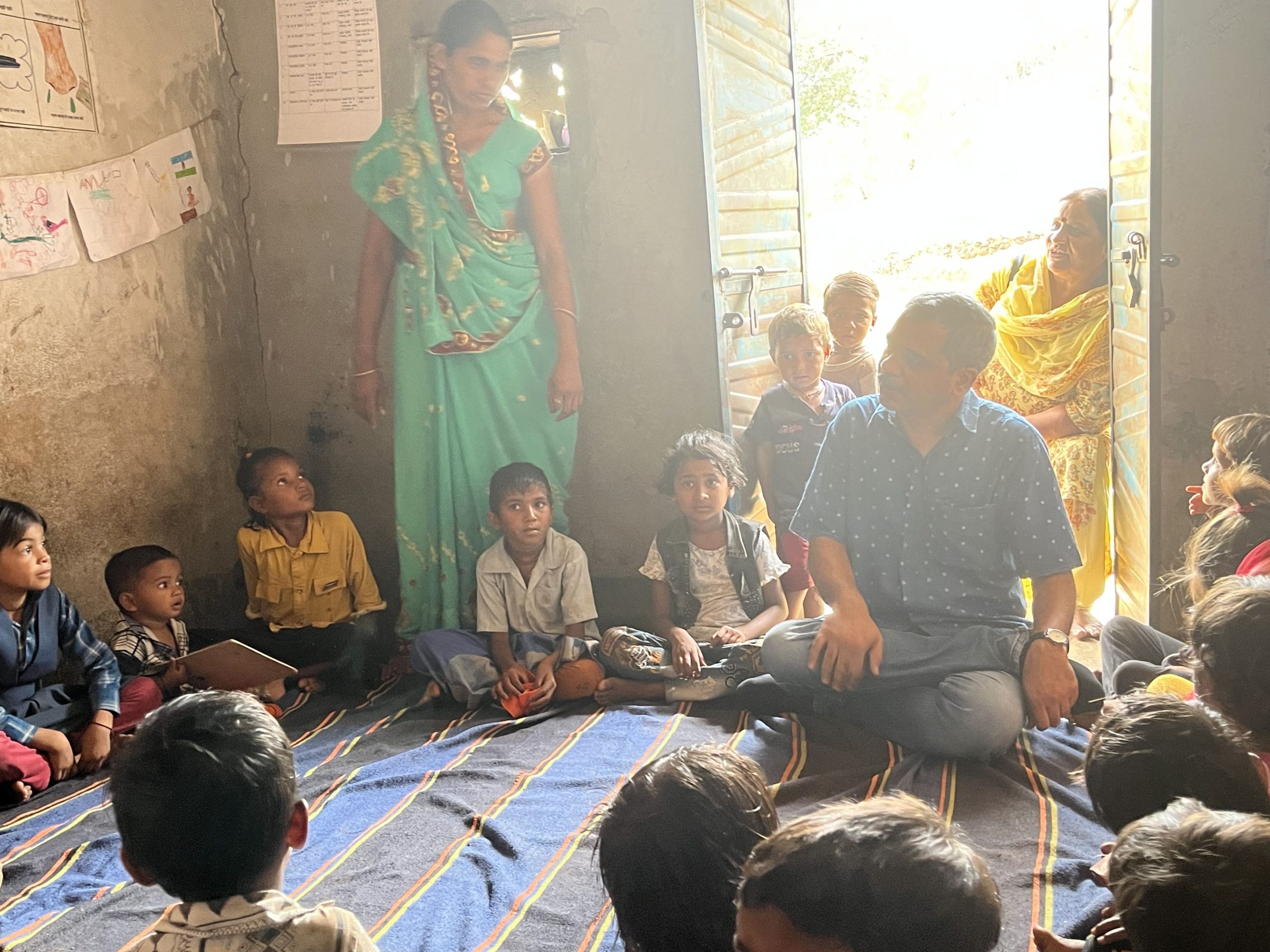 Above: Seva Mandir’s Chief Executive Ronak Shah sitting with the nursery school kids, singing nursery rhymes.
Above: Seva Mandir’s Chief Executive Ronak Shah sitting with the nursery school kids, singing nursery rhymes.
Seva Mandir’s expertise in livelihoods and the commons (public pasture lands) acts as an incentive for villages wanting to develop their land, grow enough food to live and have enough left to sell to market. A great example is Ummedpura village, new to Seva Mandir, 70km away in the marble mining area. The environment is inhospitable – arid ground strewn with marble dust, slag heaps everywhere, and grinders operating 24/7. There are no wells, and the little work available is in the mines, presenting the risk of hearing loss, or worse, dying from marble dust inhalation. With no natural lakes, the monsoon rain lasts only a few months in the ground. The Seva Mandir solution is to dig a two-hectare hole, which is three feet deep, and move the good earth using JCB. Farmers pay 30p per load for this earth. The hole holds water for six months, and though it’s not good enough to drink, it’s good enough to get two food crops.
 Above: fully engaged villagers explaining to us their ambitions. One of the hundreds of marble ‘shops’ and a wall made from marble off-cuts. The marble photos suggest a tranquillity, which is not at all accurate – it is a place of heat and marble dust.
Above: fully engaged villagers explaining to us their ambitions. One of the hundreds of marble ‘shops’ and a wall made from marble off-cuts. The marble photos suggest a tranquillity, which is not at all accurate – it is a place of heat and marble dust.
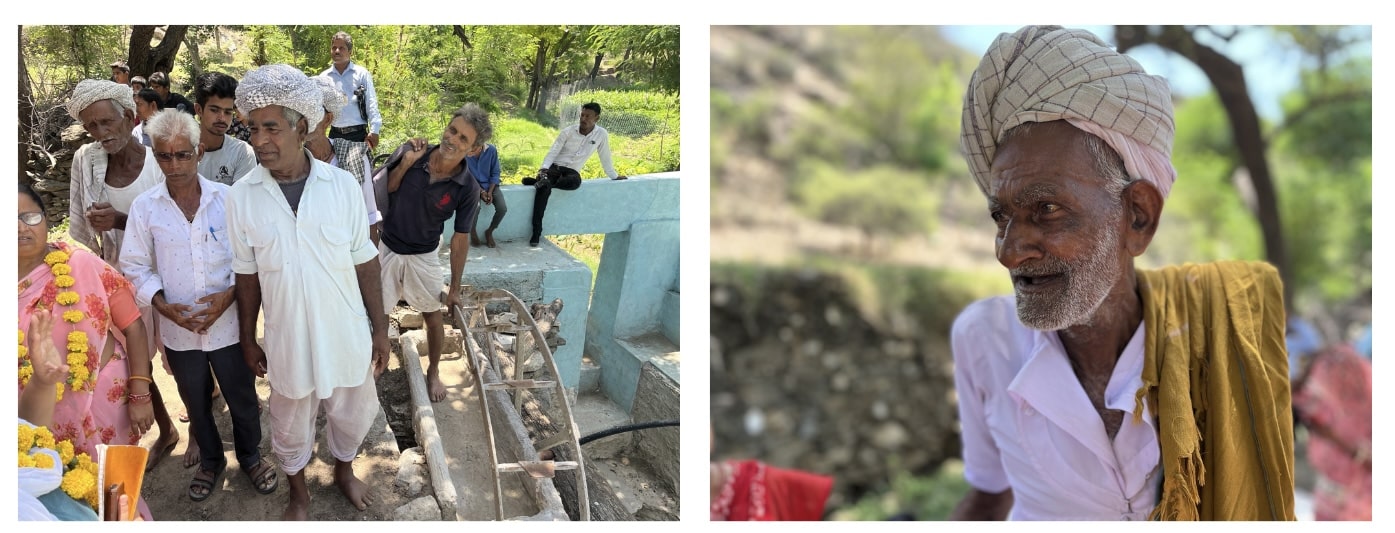
We visited the remote village of Khamnor to see their recently upgraded solar-powered well. Now they can irrigate their land far from the well. And more good news, a tarred road is expected soon, giving villagers more mobility and freedom. The village elder on the right towered above me, wondering why I was so small!
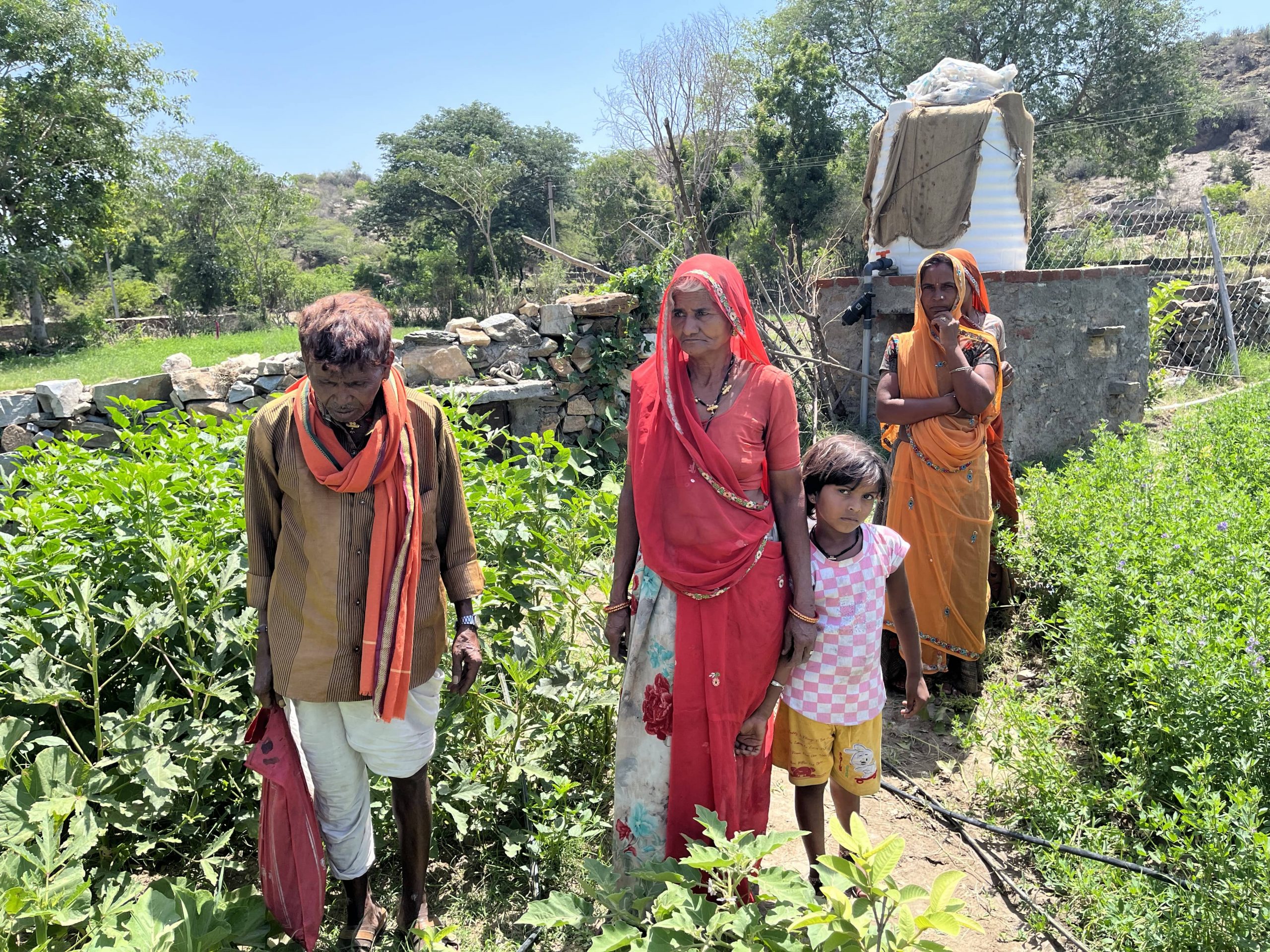 Above: a grandmother with her granddaughter showing us the okra and coriander crops she tends. Seeds and water pump were both supplied by Seva Mandir.
Above: a grandmother with her granddaughter showing us the okra and coriander crops she tends. Seeds and water pump were both supplied by Seva Mandir.
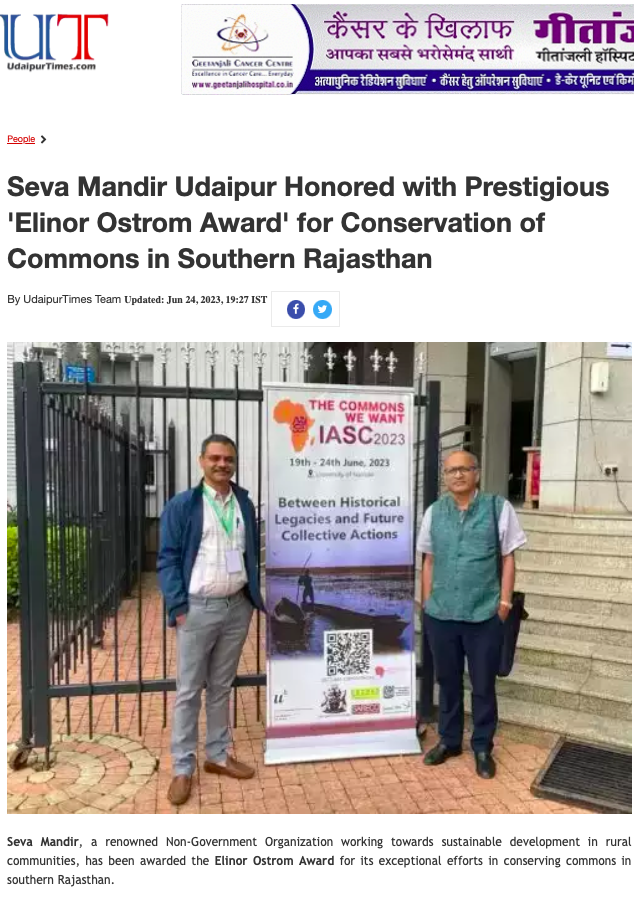 Above: Seva Mandir wins the 2023 Elinor Ostrom Award
Above: Seva Mandir wins the 2023 Elinor Ostrom Award
Working With, Not Against, the Powers That Be
Today Seva Mandir utilises its experience and expertise to influence and steer government programmes. One great example of this is Seva Mandir recognising that not enough girls go to government schools and then investigating the reasons why. They established that there were too few women teachers, not least because there were no women’s toilets. In response to this, Seva Mandir built women’s toilets as well as separate girls’ toilets. Then they taught the boys about menstruation so that they stopped teasing the girls. Finally, they encouraged the girls to attend school. As a result, girls’ attendance at government schools has shot up. We visited one such school, and it was a joy to meet teachers and pupils alike who came in specially during their school holiday to see Gilly and me. They were shy to start with and then effervescent!
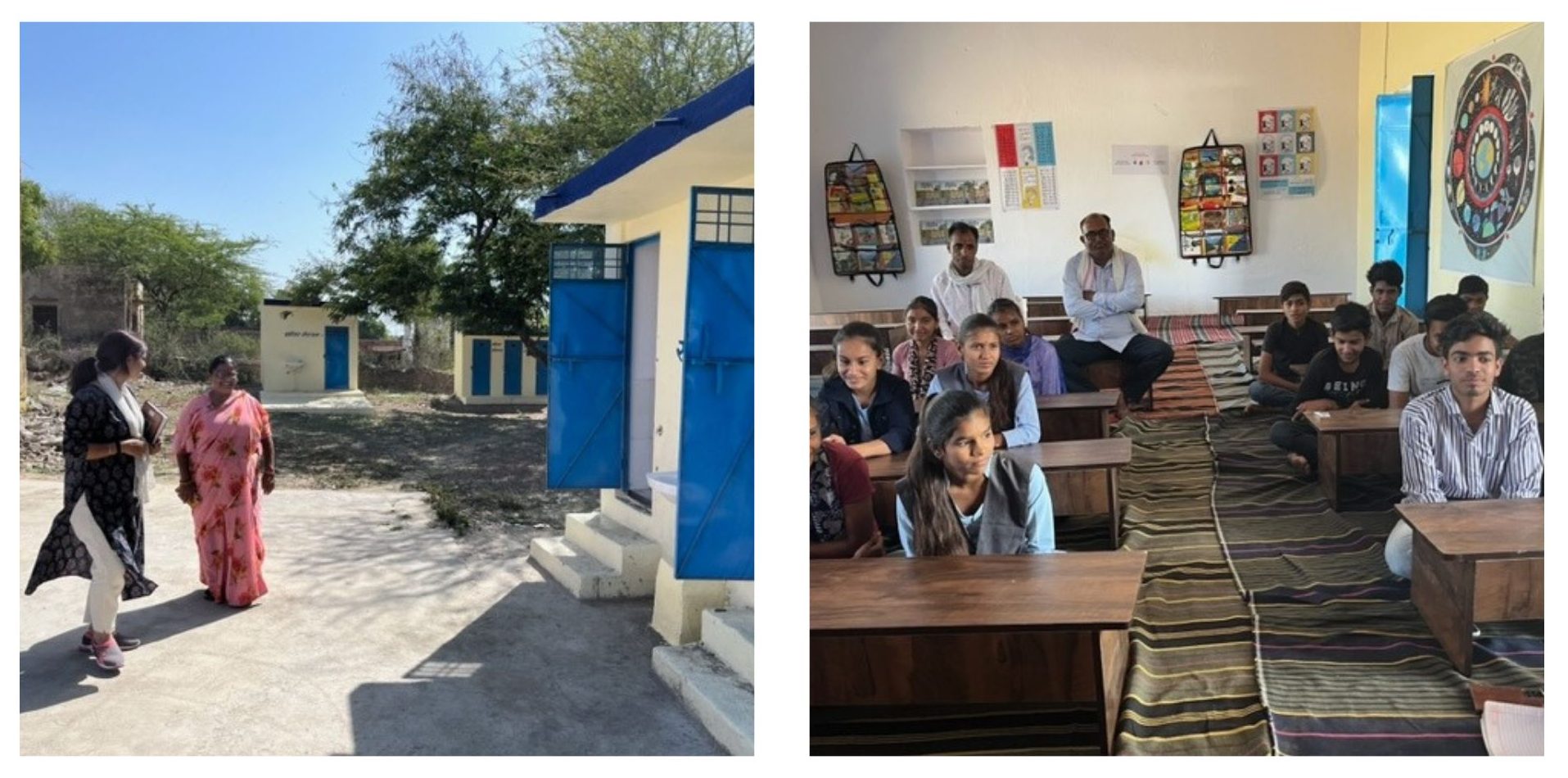
Another example is Seva Mandir’s Short-Stay Home for abused women and their kids, where the running costs are subsidised by the government. When we visited, we were greeted unexpectedly by radiant smiles. Gilly introduced herself first, not mentioning her magistrate duties. Our companion Laxmi Thakur then translated her introduction into Hindi, which caused the women to burst out clapping. Before handing back to Gilly, she whispered to me that she had told the women about Gilly’s expertise in domestic abuse, hence the clapping. Gilly then compassionately shared what she experiences in London as a magistrate, which led to empathy and understanding all around. At the end of the visit, the women crowded around Gilly, wanting hugs.
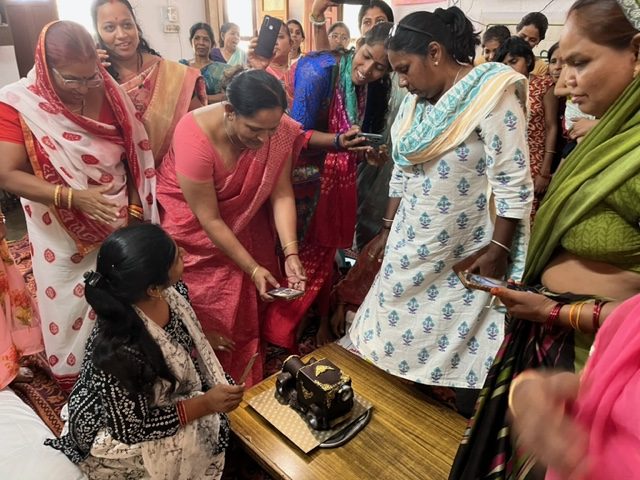 Above: The women were thrilled at the gift of a chocolate cake made for them by our hotel.
Above: The women were thrilled at the gift of a chocolate cake made for them by our hotel.
Empowerment Through Sport
Twenty years ago, youth ‘play’ was far from our thoughts, with technical vocational training being more the focus. But how far we have moved on since then – sports are considered an equal if not more important portal to adulthood. Identifying and stimulating one’s talents; playing together irrespective of background (‘caste evaporates on the football field’ one girl explained); understanding the beguiling nature of ‘you win some, you lose some’ – what life lessons!
The village of Jhuthri was an inspiration – everything Seva Mandir’s founder would have dreamed of 55 years ago. On arrival, the greeting party led us up steep steps to a relatively large building filled with a hundred people or more. We had only been expecting to meet the village youth group (made up of young people aged 16 to 23), but the village elders had different ideas! They wanted to celebrate their achievements and the seminal role of Seva Mandir. Speaker after speaker, we saw confident, charismatic women – women who have moved mountains. The men were respectful and attentive, and there was big applause after every speech. Then several youths stood and spoke, with the girls ’ football team all present. Eighteen months ago, they had never heard of football. Today they play in tournaments in the big town 30km away. Gilly got up to thank them for their astonishing achievements and said she looked forward to the girls ’ team competing in London, which was met with enthusiastic uproar.
A decade ago, a retiring colleague wanted to help Seva Mandir by donating chess sets and paying a local professional player to coach kids. Sadly it was not something that could readily work in Seva Mandir villages, so I asked the head teacher of our sister NGO, Vidya Bhawan, whether he might be interested – the rest is history. One twelve-year-old girl is India’s national champion for girls of her age, and several other girls play for Rajasthan. Two boys also play for Rajasthan, and the younger one, aged thirteen, will be representing India in Mexico this coming September. We were privileged to be introduced to both of the youngsters.
A Real-Life Cyclone
In the midst of our visit, there was a hurricane! With ferocious winds, we were confined to our hotel. A day earlier, we had visited two villages where Ronak Shah, Seva Mandir’s chief executive, explained contingency plans to the villagers:
“Stay inside, get your livestock inside, don’t go out, fill up plastic water tanks on the roof so they don’t blow away and hold the roof down. Heavily pregnant women should go to our health centres, and youths should carry the message to remote areas without mobile contact.”
Seva Mandir then communicated this to the villages through their 130,000-strong WhatsApp group and informed them that there would be news from Seva Mandir once the hurricane had passed.
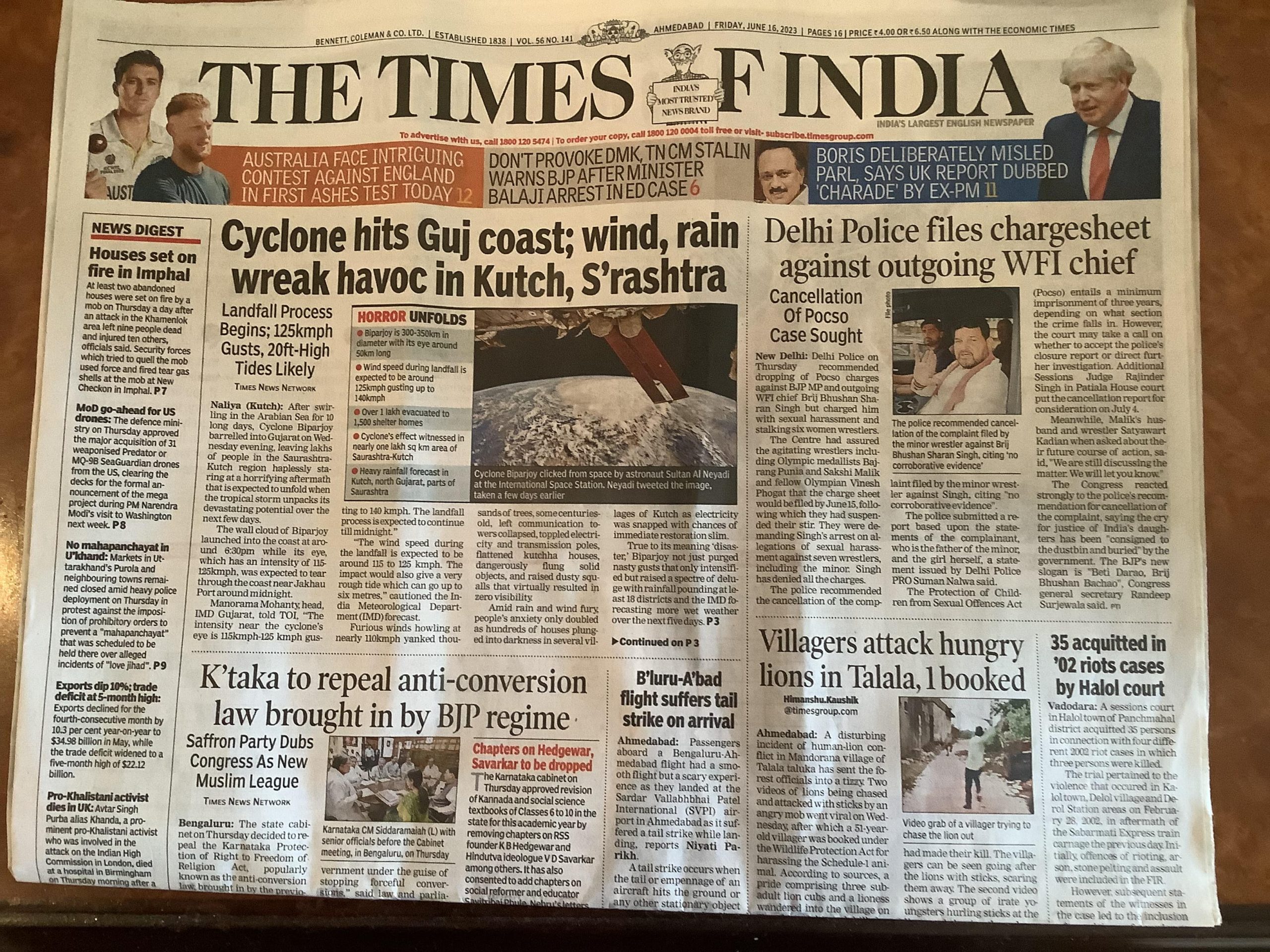
“The villages are mostly fine in the Udaipur region. The storm has not been as strong as anticipated. It affected the districts in western Rajasthan more.”
Though the cyclone was obviously not good for many, blessedly, no one died, according to the newspapers.
Final Reflections
We would like to pay tribute to Ronak Shah and his wonderful team for their dedication, inspiration, humanity, and courage and for serving as such a good example of how to empower some of the poorest people in the world.
Awe-inspiring!

